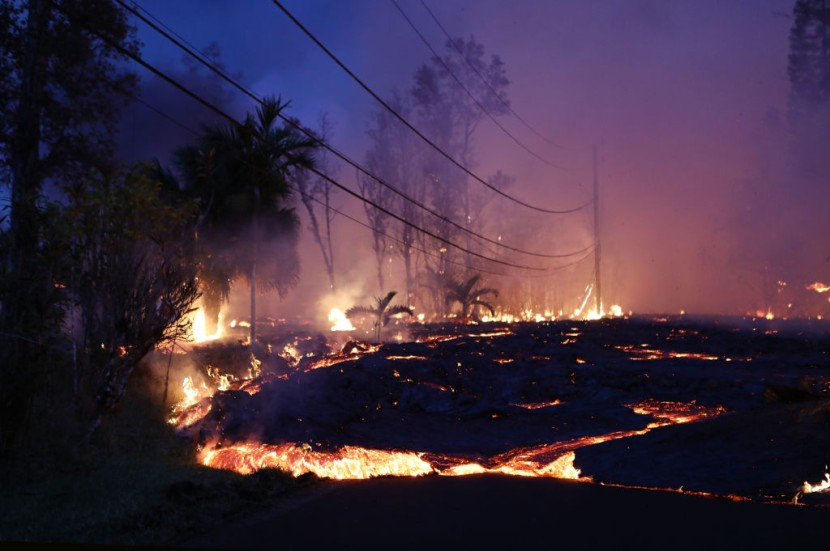
After the Kilauea Volcano eruption, which was followed by a series of earthquakes, the Civil Defense Agency of Hawaii county has asked residents to remain indoors.
According to the COH, the eruption took place on the Big Island on late Sunday night local time at Halemaumau Crater as the Kilauea Volcano observatory raised the alert level to warning.
Based on the information released by the Hawaii County Civil Defense, the eruption commenced shortly after 9:30 p.m but remained confined to the caldera of the summit of Kilauea Volcano.
According to CNN, Bill Hanson of the Hawaii County Civil Defense shared that shortly before 11:30 p.m. that the HVO or the Hawaiian Volcano Observatory mentioned that it looks like it is all contained within the crater, however, the National Weather Service did say that there was a plume that was released from Halemaumau that had risen for 30,000 feet.
He also added that the Civil Defense is currently monitoring the situation especially the plume which prompted a special weather statement from the National Weather Service as winds were blowing the plume south then to the southwest.
According to West Hawaii Today, Hanson also mentioned that they were not sure if it contains ash or just water vapor at the moment, that is why they will be monitoring and will check to HVO if they will see anything coming down in the Ka'u District, he also added that the plume was very white which indicates high water content.
Based on the statement coming from the Civil Defense, they have cautioned that the ash fallout will be most likely happening in the Pahala, Wood Valley, Ocean View, and Naalehu, as they avised the visitors and residents to remain indoors in order to avoid exposure to ash.
Read Also: Rockets Fired at Us Embassy in Baghdad, Iraqi Military Claims Attack Orchestrated by Outlaw Group
The National Weather Service also mentioned in their updated special weather statement that at 12:21 a.m., the Civil Defense reported that there is no ashfall close and downwind of the summit of Kilauea which includes Highway 11.
Hanson also added that on Sunday night the Civil Defense did not receive any information or any reports of damage coming from the public and even coming from the observatory or within the park.
Based on the information released by the United States Geological Survey, the eruption started at 9:36 p.m. with multiple fissures opening on the walls of Halemaumau crater, while the tallest lava fountain was recorded at 165 feet.
The survey also mentioned that the lava cascaded into the summit water lake, which boiled off the water and formed a new lava lake at the base of the crater, Volcano Discovery reported.
According to the USGS Hawaiian Volcano Observatory on late Sunday, for the past several weeks, they have recorded ground deformation and earthquake rates at the summit of Kilauea Volcano and the upper East Rift Zone which had exceeded background levels observed since the conclusion of the 2018 lower East Rift Zone eruption and summit collapse.
Related Article: North Korean Mountain Resort to be Redeveloped Amid COVID-19 Pandemic
© 2025 HNGN, All rights reserved. Do not reproduce without permission.








